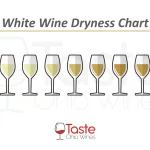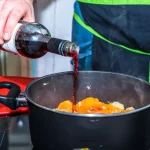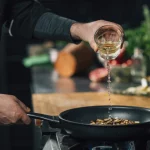If you’ve ever seen The Sopranos, or any film or TV drama set in a North American Italian household, you have probably been jealous of the rich and lavish cuisine presented on screen.
One of the centerpieces of Italian dining culture is table wine which has an interesting history with Italians and sommeliers alike.
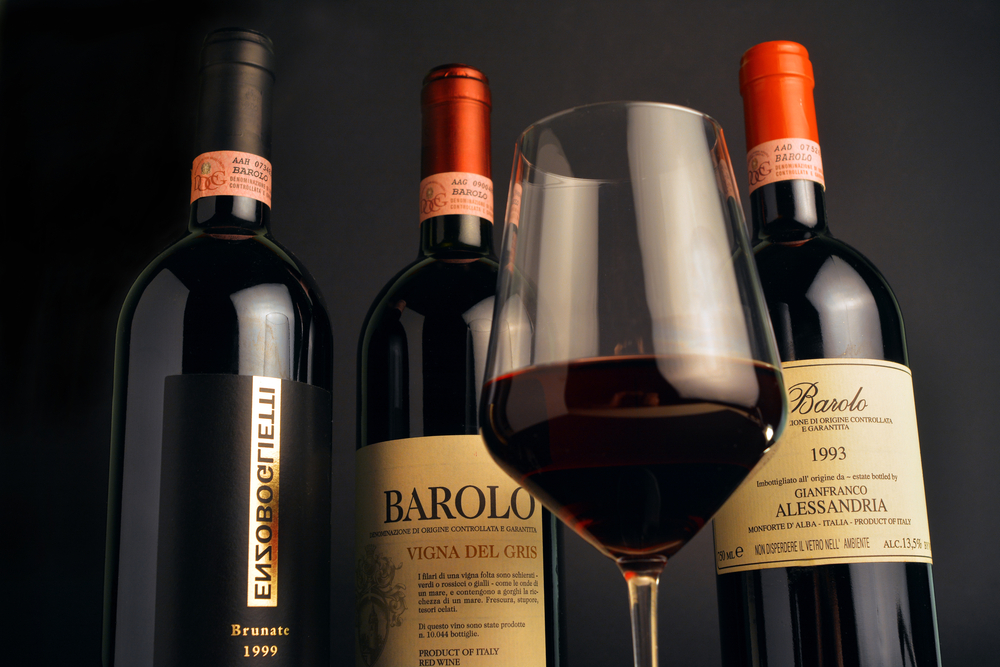
In Italy table wine is referred to as ‘vino da tavola’, which translates pretty literally to table wine. While ‘table wine’ remains a classification title for the average sommelier, the culture of table wine is one of working class struggle and making the most of what you have.
The Italians took this with them to America and table wine has become a symbol and monument to the pastoral and mundane life of Italian families from New Jersey to Sicily.
If you want to speak about table wine with the knowledge of a sommelier and the class of a European, then read on as I list the four best Italian table wines that you can wow your guests with at your next dinner party.
What Is ‘Table Wine’?
Table wine is both a style of making wine and also a generic wine classification.
In America we generally understand table wine to mean generic wine that isn’t fortified or sparkling or expensive, it’s a simple and humble wine that is for the purposes of sharing and eating.
In America, a table wine is generally regarded as having a max ABV of 14% and is much lighter for drinking. Table wine is regarded as something that you have with a meal, and is much similar to what you might refer to as a ‘house wine’.
In the European Union, and in line with the standardized wine guidelines of that continent, all wine is generally labelled as table wine or superior wine.
Most table wines only indicate the country they are made from (e.g. Italian table wine) while superior wines often list the region the grapes come from as well as the country of origin.
Such superior wines can provide information about where they are made and offer the consumer peace of mind when it comes to sourcing their produce. Comparatively, table wine can often be home made and doesn’t need such protective certification.
To put it simply, table wine is an inexpensive and generic product that is made to be accessible to all but usually lacks certification of quality.
As wine is a protected product like whiskey or cheese, it has to go through these sometimes arduous production requirements in order to be saleable. Those who make table wine are often winemakers or home brewers who want to make wine without all the red tape.
This includes experimenting with grapes and brewing methods that are non-standard by the governing bodies of food safety groups.
As mentioned previously, table wine has a certain culture within Europe and especially in Italy. Table wine reminds them of the old country, Sicily, and how their mothers and grandmothers used to make wine from the local grapes.
In this situation these governing bodies aren’t spared a thought. Because of the culture in Italy many people regard their wine to be of a high standard and Italian table wine, specifically, has a lot of fans across the world and especially within America due to Italian and American relations.
Related: Cannonau wine from Sardinia.
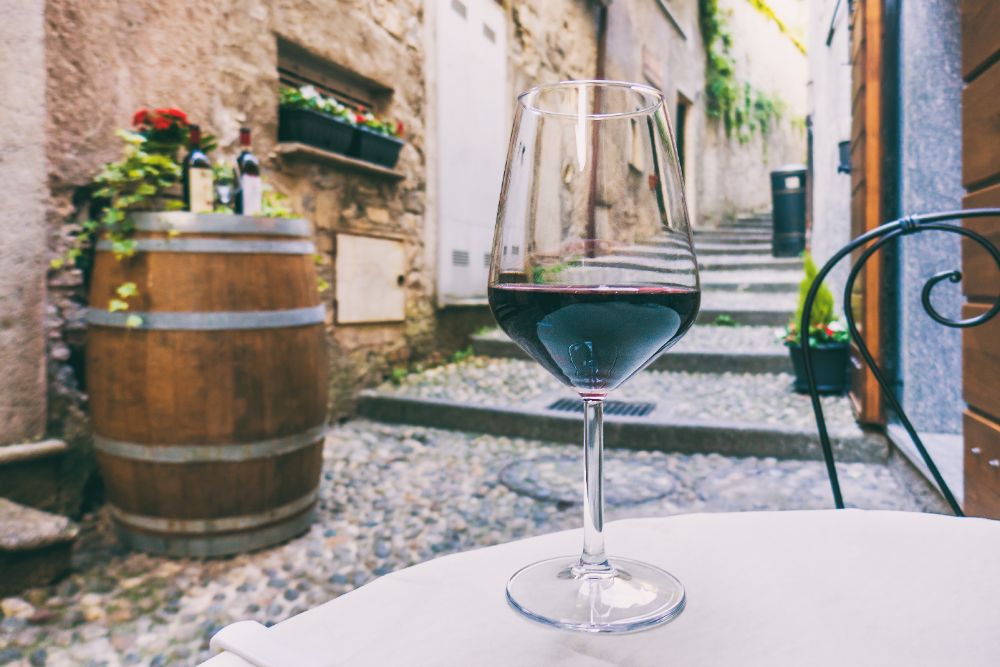
Four Best Italian Table Wines
In line with most wine classification, these Italian table wines are listed by grape and region.
Piedmont (Or ‘Piemonte’)
Located in the Northern tip of the Italian mountains, sandwiched between the Alps in the north and the Apennine Mountains to the south, Piedmont, or Piemonte in Italian, is a famous wine region that is home to the Nebbiolo, Barbera, and Arneis grapes, among many others.
Boasting over 40,451 hectares of vineyard area, and producing over 239 million bottles a year, Piedmont has some of the very select group of vineyards which have made it onto the UNESCO World Heritage List – these vineyards are Langhe-Roero and Monferrato.
Piedmont produces Barolo, Barbaresco, Gavi, and Barbera d’Asti wines which are of particular note.
The wine that is of importance to us, is the table wine Barolo. The ‘king of wines, and the wine of kings’ is described as having the scent of ‘tar and roses’ and is made in the southern region of Piedmont.
Barolo has won awards for its unique and complex notes, its flavor is likened to cherries and prunes but met with spices such as cinnamon and clove, often smelling like tobacco and leather, like all good Italians.
Due to the tannin content of Barolo wine, it is regarded as one of the best wines for the table as it pairs perfectly with any food, but especially Italian. It’s rich and deep flavor means it goes well with the array of moorish meats present in Italy.
Another famous Italian table wine that is of high quality, while often overlooked, is the humble ‘Dolcetto’ grape. The Dolcetto grape is grown in the Piedmont region and translates to ‘little sweet one’, in US culture it is potentially referred to as Douce Noire.
Some suggest that the Dolcetto grape isn’t actually Italian in origin and instead comes from France and was brought over and grown in Italy around the 14th century.
Interestingly, its nickname is quite misleading as the wine made from Dolcetto grapes is actually quite dry rather than sweet. Known for its cherry, liquorice, and prune flavors the wine is tart but is very light in its ABV which makes it the perfect table wine for any Italian food.
The Barbera vine is also another grape that makes for a perfect Italian table wine.
The grape is cultivated in the Piedmont region and is prized for its ability to be ripened two weeks before the Nebbiolo grape, making it popular among winemakers who can grow both Nebbiolo and Barbera vines and can alternate when they are harvested and fermented.
When young, the wine has a very strong grape aroma and has notes of raspberries, blueberries and other acidic fruits due to its early ripening time.
Often winemakers spend time trying to balance out this acidity which means Barbera grapes can be a welcome challenge to some winemakers early in a season.
Outside Piedmont, the Barbera grape is used and mixed among many different regions within Italy and outside it which make it a perfect grape for a table wine.
Super Tuscans ( Or ‘Toscana wine’)
Tuscany, the birthplace of the Italian renaissance, is a place of sacred ground when it comes to both wine making and Italian history, culture and art – the vineyards in the hills of Tuscany have been immortalised among Italian and foreign artists throughout time.
Tuscany is the proud producer of notorious grapes such as the Sangiovese, Merlot, and Cabernet varieties. Tuscany produces 263 million bottles a year and has around 56,658 hectares of vineyards to hold dear to its heart.
Super Tuscans are one of the most famous examples and natural examples of a ‘certified’ table wine.
For reference, Merlot and Cabernet are not Italian grapes, they are French, but even though Super Tuscans are regarded as one of the highest quality wines, they are still regarded as table wine.
While this certification has little sway over the Italians’ love for it, table wine is the lowest grade wine in France for example, which only adds to the confusing world of wine.
As of 1992 Super Tuscans were actually specifically permitted to leave the table wine classification and become a superior wine because of the quality of it. But Super Tuscans still remain a table wine in many people’s minds as it perfectly fulfills the Italian definition.
In general a Super Tuscan is often a mix of different international grapes such as Merlot and Cabernet varieties which are from France and is a highly sought after table wine for this reason.
As they are a mix of grapes their flavor can vary depending on the ratio of different grapes used, as a result this often perfectly fulfills Italian table wine culture as each Super Tuscan can be specific for each winemaker and adds a unique side to this famous wine.
In general, the wine is described as having tasting notes of dark cherry and cocoa and is often described as smokey and comforting. The Super Tuscan goes well with basically any food, like all Italian food they are made to drink while you eat.
The Sangiovese grape, which is Italian, is used in the creation of Chianti which is one of the most well known wines around the world and is an especially common table wine within Italian-American restaurants.
Often served in the notorious ‘fiasco’ which is the bottle that often sits in the straw basket we all recognise from the movies, Chianti is one of the most famous table wines. Ninety million bottles of Chianti are produced every year in the Tuscany region.
The classic Chianti has a consistent taste and quality, with notes of cherry, plum and spice – it’s aromas and taste makes it Italy in a glass.
Frequently Asked Questions
Is Table Wine Expensive?
No, Italian table wine is often the cheapest of wines in Italy. Pricing, with wine, often runs parallel to the certification of the wine – so table wine will always be cheap as it is uncertified.
The certification is what guarantees quality and protection to the consumer and this is what is regarded highly by food safety agencies and wine licensing bodies who ultimately price the wine.
Table wine could potentially be of a higher quality than the ‘superior’ wines; it simply lacks the certification for its quality.
What Is The Most Popular Italian Wine?
It’s not a surprise that Tuscany holds the most favor for wine drinkers in Italy and its wines form most of the top ten on any wine drinkers list. Barolo is often associated as the most popular grape among Italians, but your definition of popular and famous will differ widely from others.
Try all the wines, and pick which is your own favorite.
Why Is It Called Table Wine?
Table wine often gives one or two meanings, both associated with its placement on the table. Firstly, table wine refers to the fact that it is drunk at the table when eating food.
As most Italians will have to return their passports if they ever eat without wine, it’s important that table wine is as inexpensive as it is inoffensive.
SO, table wine just means it’s most commonly drunk with food, often people don’t drink expensive wine with their meal as their palette will become muddles with other flavors, that’s why wine is most commonly paired with foods that taste similar or compliment rather than confusing your taste buds.
On the other hand, table wine refers to the commonality and shared nature of the bottle. Table wine is supposed to be shared, so its placement on the table is a symbolic offering to your guests that they are welcome and should feel at home.
Is Table Wine Different From Regular Wine?
Well, it depends what you mean by ‘regular’ wine. Table wine is generic, it’s unfortified and isn’t sparkling and in this way is different to Prosecco or sparkling white wines. It also depends on which country’s governing body refers to it as table wine.
In Italy table wine simply means it uses non-standardised wine making methods and often grapes from different regions than where it was made. Whereas French table wine simply refers to the lowest quality of wine.
In general, table wine is quite similar to other wines. The main difference is that table wine is often a lot less alcoholic than ‘regular’ wine and usually maxes out at 14%
Final Thoughts
Now you can return to your dinner party without wine rookie anxiety that someone will ask you which grape was used in what wine. You can talk about Italian wine with the charisma of Tony Soprano and now you know a little more about the geography and culture of Italy.
- Shrimp Cocktail (and More) Wine Pairing Guide - 09/06/2022
- What Wine Serving Sizes Look Like: Standard Size and More - 08/06/2022
- How Much Sugar is in Wine: Glass and Bottle Sugar Content - 08/06/2022

